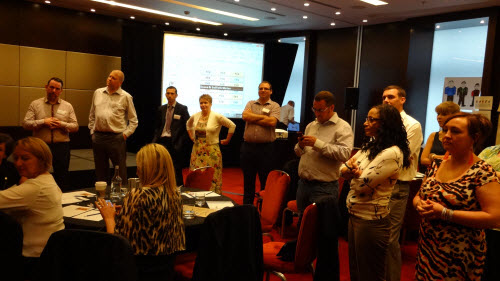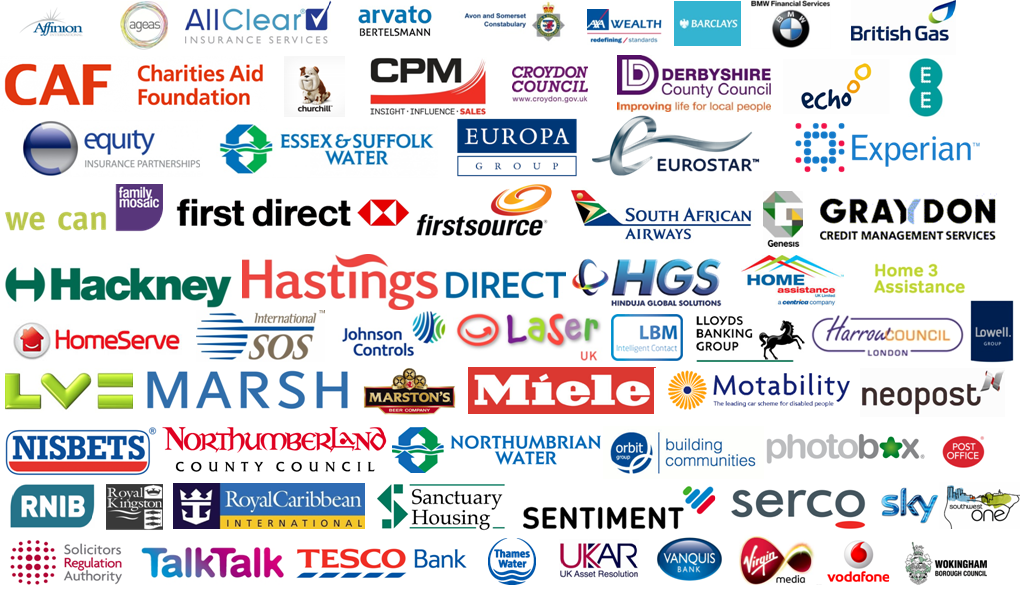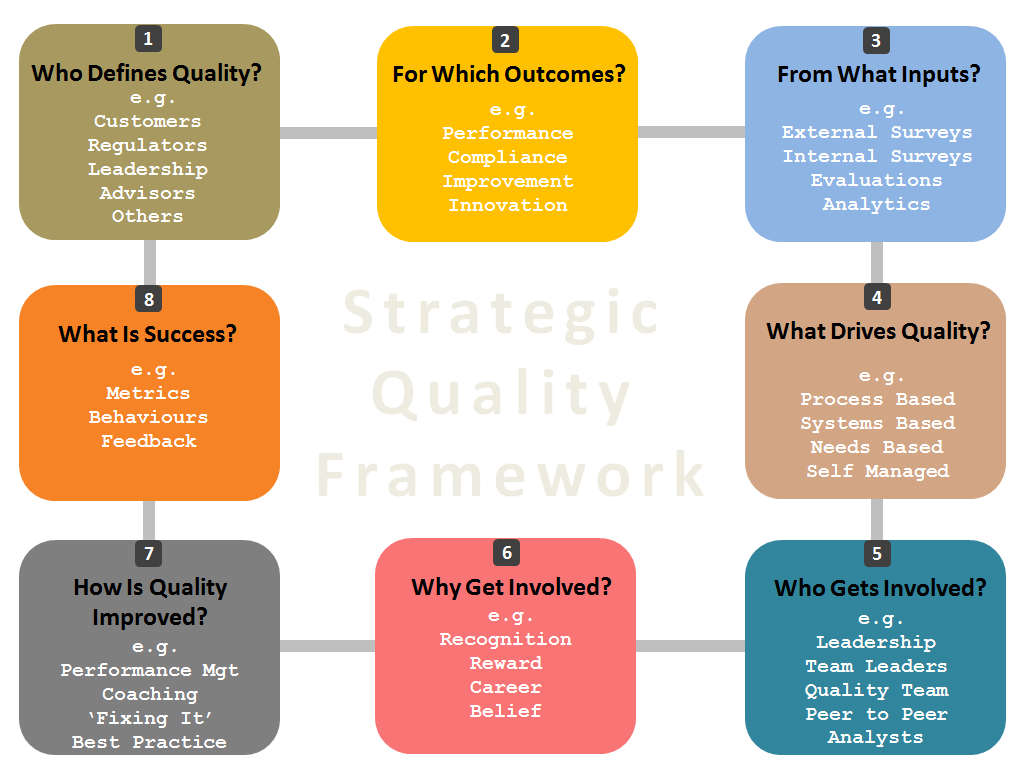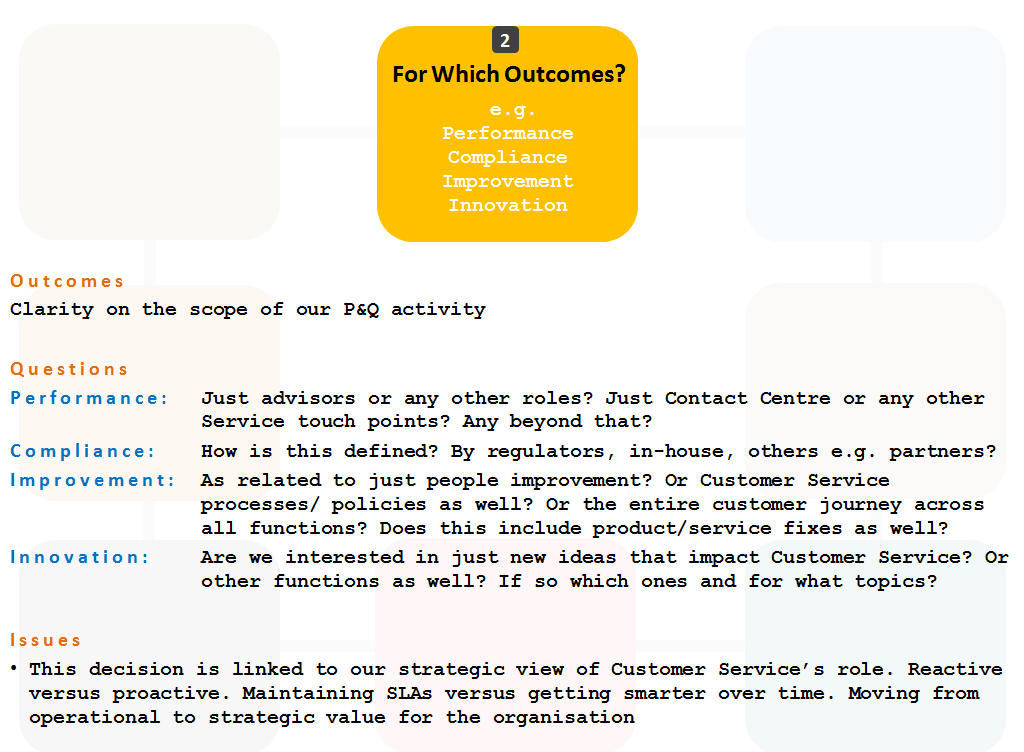
The P&Q challenge is a global first. It remains a unique experiment in sustained collaboration for the customer service industry. Unlike conferences or training programmes which are typically run over a few days at most, this programme provides a six month window for sustained planning and learning.
The result is that organisations are able to upgrade complex ecosystems such as quality and performance management in an effective transformational context. This compares with the usual tactical tinkering around ecosystem elements such as an evaluation form or a new coaching module. Instead P&Q has nurtured strategic thinking in people whose daily operational pressures seldom allow for reflection and creative debate.
The results have shown just how important this type of event is in order to help the customer service industry rise to the opportunities now engulfing it. While the rhetoric of customer experience infused with digital, social and mobile behaviours paints a brave new world that everyone wants to embrace, in reality the last 30 years of strategic neglect cannot be sidestepped overnight.
Fragmentation abounds. Point solutions still hold sway. For many, investment decisions remain conservative and probably the leadership required to fast track customer service towards a digital future is not always in place. But needs must and ways through are being found by the most enterprising and ambitious in the industry.
Indeed these are the ones who have found themselves on the P&Q challenge. They have been fast to acknowledge that the traditional mindset and practices are outmoded. Equally, they have been quick to get on board as pioneers. And are also keen to get their organisations ahead of the competitive pack. After all, what is more central to the mission of ‘customer service as a differentiator’ than the twin focus of quality and performance?
Who Is Involved?
As someone with 30 years under his belt, I’m always on the lookout for a way to further the customer service industry’s strategic agenda. In a previous lifetime, I’d facilitated 5 years of best practice forums for a contact centre SI. One of the all time favourite topics was Performance and Quality. Always a full house, the discussions covered familiar ground. The frustrations of manual sampling. The relationship between quality coaches and team leaders. The techniques for calibration.
It struck me how poorly those who told their stories were being served by the vendors. Little if any educational support. Same old templates. No leadership to advance the art of the possible. These, plus an unhealthy obedience to regulatory definitions of quality, left everyone working in a low yield, high effort context.
A little later I had a chance to design a complete performance management coaching manual for a work colleague who was delivering some transformational training on attitude and needed some ‘method’ to supplement the pure experiences he was generating. 120 pages later I’d laid out the challenges of supporting ‘underperformance’ and ‘celebrating success’ as best I could.
These were my credentials for facilitating the first three cohorts who have so far gone through the P&Q challenge.
Of course none of this would have happened without funding. For that, the industry has to thank a couple of far sighted executives in the speech analytics industry. Jonathan Wax and Jon Ezrine set themselves the task of associating their brand Nexidia with becoming long term educators around the transformational power of speech analytics. Or to be more accurate in a multi-channel world, let’s call that Interactive Analytics.
They have funded the original research, roadshows and three series of the P&Q Challenge to date. Additionally they invested in a number of programmes with strategic partners such as the Professional Planning Forum, Call Centre Management Association and South West Contact Centre Forum who collectively provide community membership of the UK contact centre industry.
Beyond this group, special thanks go to industry sites such callcentrehelper.com and callcentre.co.uk for providing airtime and editorial to spread the word.
From the very start, it has been an industry effort. Everyone pitched in with ideas either in the form of survey participants, roadshow delegates who helped source the strategic planning framework or the many video interviews they also provided which helped provide credibility and insight.
How Does It Work?
The idea of the P&Q challenge is to enable organisations get up to speed on how to use the ‘Strategic Quality Framework’ as a diagnostic and planning tool. The need for such a tool is based on the extremely dynamic world that Customer Services now operates in. Clearly many of the internal and external drivers of just a decade ago have given way to new ones. Yet there is little best practice on how to keep responding to these in an integrated way. This framework is one example of attempting to reach this new level of capability.
As can be seen the framework comprises eight key decision areas. Comparing current against next generation needs allows those taking part in the challenge to articulate how they need to move forward. It becomes clear from the outset that interdepencies between decision areas show why Performance and Quality needs managing as an ecosystem in the way that change is brought about.
In order to dig into a discussion, each area has a further set of guiding questions to trigger debate. Here is one from the ‘For Which Outputs?’ discussion.
Typical live sessions start with an initial briefing as warm up. This is followed by table discussion with the outputs being captured on A3 planning sheets. In some sessions this results in broader consultation with key stakeholders such as customers, advisors and team leaders back in the workplace. In this way the transition to new versions of a P&Q ecosystem becomes a collaborative event, with many of the stakeholders experiencing themselves as co-creators.
Since I’ve just been assessing the planning outputs of the first two cohorts, I’ve had a chance to read many responses from front line teams involved in these consultative exercises. It’s no surprise to witness that the journey to an empowered team starts with engaging them and thus delighting them that they are being included. This might seem ‘101’ culture to some but bear in mind the typical impact of contact centre based service anywhere in the world. Or for that matter the typical research headlines from organisational engagement studies. In truth, most organisations are still leaving behind their outmoded management models. So activating deeper levels of motivation in people remains a newly discovered benefit.
This is why the challenge is a six month process of debate, listening, planning, communicating and onboarding. Once all eight decision areas have been considered, the outputs from those A3 planning sheets are transformed into four deliverables. This forms the basis upon which the on site assessments are made.
At this point the challenge boils down to convincing the judges of the following:
“Has this organisation demonstrated the competency to use the Strategic Quality Framework for the purpose of (1) responding to key external and internal challenges, (2) produced a response that matches those challenges, (3) fits them together as an ecosystem and (4) has a plan to succeed?”
March 27th is when we celebrate the first two cohorts to make the grade.
Conclusion
Each cohort sees a few that leave the programme. In the main the timing is not right. But for those who complete the challenge, something great happens. They discover the benefits of taking time out to properly strategise. This is the aspect that pleases me the most and to my mind is one of the key lessons the P&Q challenge provides.
It is now more than foolish to ignore the world changing around us in Customer Services. We all know that. But getting to grips with that reality is not met with a snatched session every quarter or even every month. It needs a structured and sustained effort using others outside your own organisation as support. Only then can busy operational minds change gear and open up to new ideas and start to think through the steps towards effective change. I recommend the P&Q challenge is a template for other such related transformational programmes.
This is the first in a series of posts in which I hope to capture some of the key insights and discussions we have had so far. I also intend sharing some of the great output from the sixteen organisations who have made it through the Challenge so far.








Neat presentation. Awesome framework.